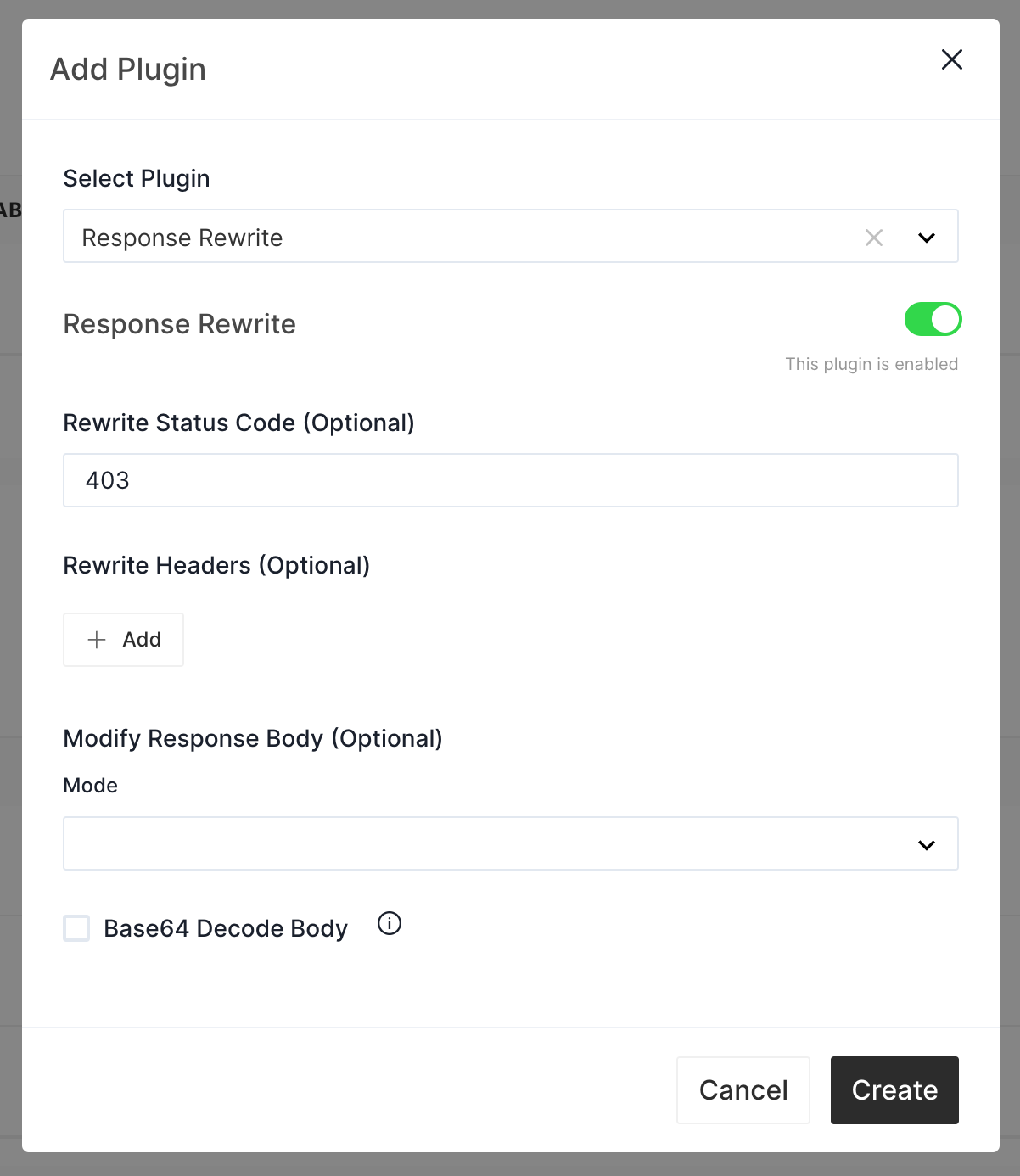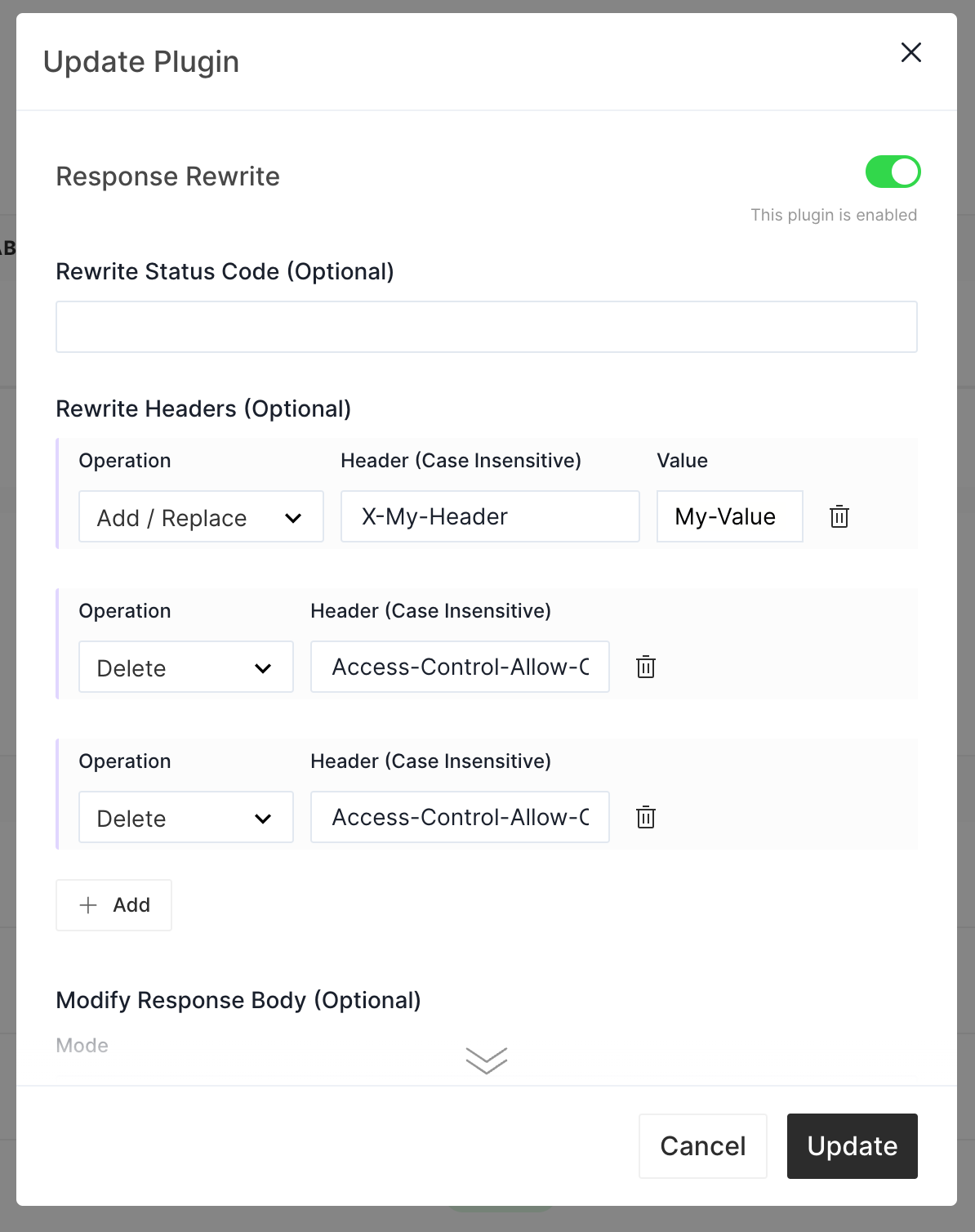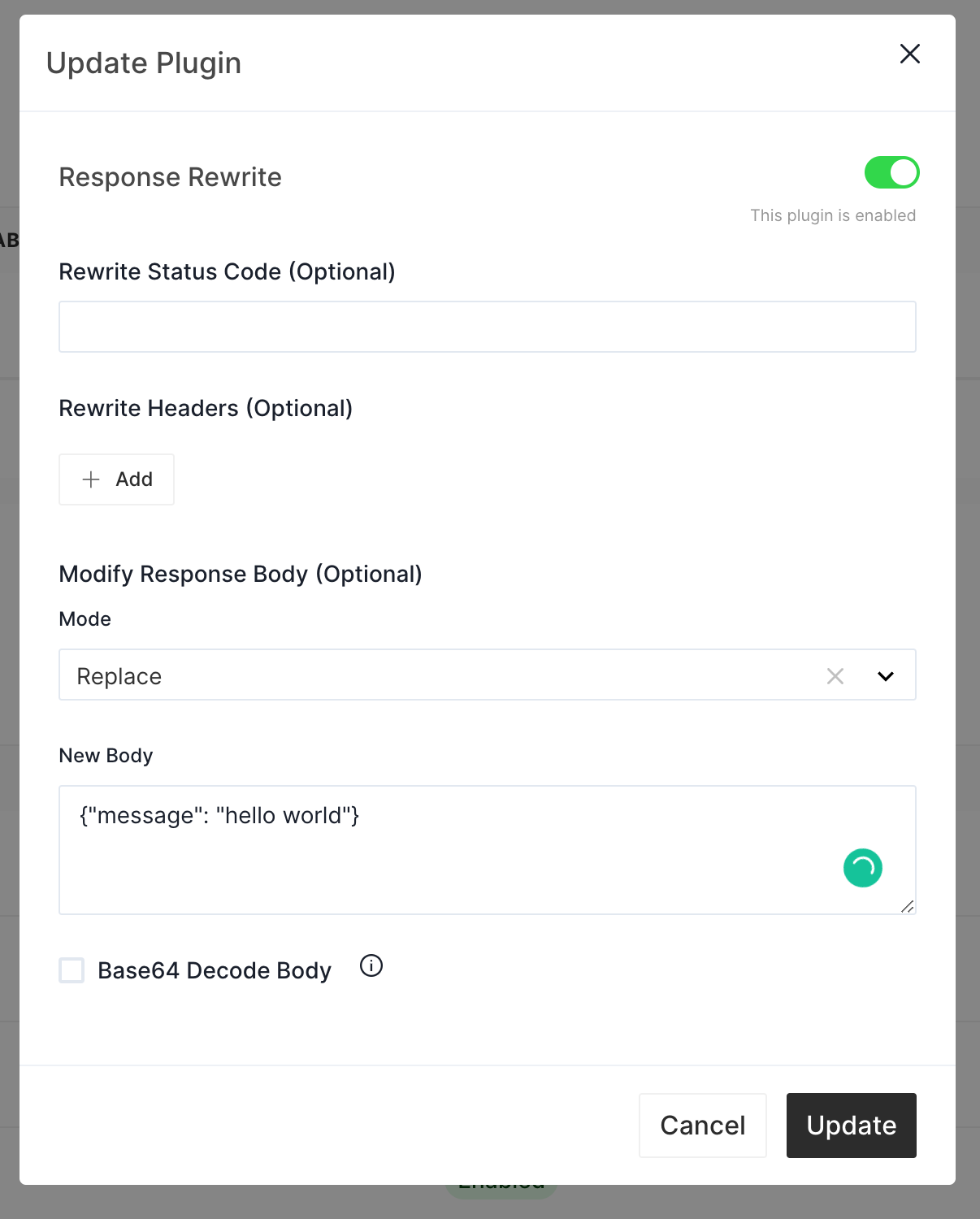Response Transforming
Sometimes you may need to transform the response of the API requests before sending them to the client, such as rewriting the HTTP status code, modifying headers and even the response body.
This guide tells you how to use the Response Rewrite plugin to do the response transforming.
Prepare the Environment
Deploy Apache APISIX
Please refer to How to Deploy Apache APISIX to learn how to deploy Apache APISIX and connect it to API7 Cloud. In this guide, we'll deploy an Apache APISIX instance on Docker.
Create Service and Route
We'll create a service with the following details in this guide.
- The service name is
resp-rewrite-app. - The path prefix is
/v1. - The HTTP Host is
resp-rewrite.httpbin.org. - The upstream URL is
https://httpbin.org.
Besides, we'll create a route inside the resp-rewrite-app Service.
- The route name is
anything. - The path is
/anything(prefix match), and strip the path prefix. - It accepts all HTTP methods.
If you don't know how to configure a service and route, please refer to the Getting Started guides first
Test Response Transforming
Now let's test the response transforming. We'll show you the following transforming scenarios.
- Rewrite HTTP status code
- Rewrite HTTP response headers
- Modify the HTTP response body
You can also combine the above transforming cases according to your actual situation.
Rewrite HTTP Status Code
Let's add the Response Rewrite plugin first.

We'll set the HTTP status code to 403 in this case. Then send a request to verify it.
curl http://127.0.0.1:9080/v1/anything -H 'Host: resp-rewrite.httpbin.org' -i
HTTP/1.1 403 Forbidden
Content-Type: application/json
Content-Length: 434
Connection: keep-alive
Date: Mon, 29 Aug 2022 09:31:00 GMT
Access-Control-Allow-Origin: *
Access-Control-Allow-Credentials: true
Server: APISIX
X-APISIX-Upstream-Status: 200
{
"args": {},
"data": "",
"files": {},
"form": {},
"headers": {
"Accept": "*/*",
"Host": "resp-rewrite.httpbin.org",
"User-Agent": "curl/7.76.1",
"X-Amzn-Trace-Id": "Root=1-630c8754-0fda4fe86f87831a2b32ff11",
"X-Forwarded-Host": "resp-rewrite.httpbin.org"
},
"json": null,
"method": "GET",
"origin": "172.17.0.1, 61.241.66.251",
"url": "https://resp-rewrite.httpbin.org/anything"
}
The status code is changed to 403, but the HTTP headers and the body are not changed.
Rewrite HTTP Headers
Now let's modify the HTTP headers.

In this case, we add a new header, X-My-Header, and the expected value is My-Value; In addition, we remove the
Access-Control-Allow-Origin and Access-Control-Allow-Credentials headers. Let's send an API request to verify it.
curl http://127.0.0.1:9080/v1/anything -H 'Host: resp-rewrite.httpbin.org' -i
HTTP/1.1 200 OK
Content-Type: application/json
Content-Length: 434
Connection: keep-alive
Date: Mon, 29 Aug 2022 09:36:51 GMT
Server: APISIX
X-APISIX-Upstream-Status: 200
X-My-Header: My-Value
{
"args": {},
"data": "",
"files": {},
"form": {},
"headers": {
"Accept": "*/*",
"Host": "resp-rewrite.httpbin.org",
"User-Agent": "curl/7.76.1",
"X-Amzn-Trace-Id": "Root=1-630c88b3-7570d890100c30647ff1879f",
"X-Forwarded-Host": "resp-rewrite.httpbin.org"
},
"json": null,
"method": "GET",
"origin": "172.17.0.1, 61.241.66.251",
"url": "https://resp-rewrite.httpbin.org/anything"
}
The response shows that the X-My-Header is added, and the value is correct.
Besides, Access-Control-Allow-Credentials and Access-Control-Allow-Credentials are removed.
Replace Response Body
You can even replace the response body via the Response Rewrite plugin.

In this case, we set the body to {"message": "hello world"}. Let's send a request to verify it.
curl http://127.0.0.1:9080/v1/anything -H 'Host: resp-rewrite.httpbin.org' -i
HTTP/1.1 200 OK
Content-Type: application/json
Transfer-Encoding: chunked
Connection: keep-alive
Date: Mon, 29 Aug 2022 09:44:26 GMT
Access-Control-Allow-Origin: *
Access-Control-Allow-Credentials: true
Server: APISIX
X-APISIX-Upstream-Status: 200
{"message": "hello world"}
The response body is changed to the one we expect.
If the desired response body is an octet stream, you can encode it into base64 format, then paste it on the API7 Cloud console. In such a case, don't forget to opt in the Base64 Decode Body checkbox. It asks Apache APISIX to decode the body before sending it to clients.